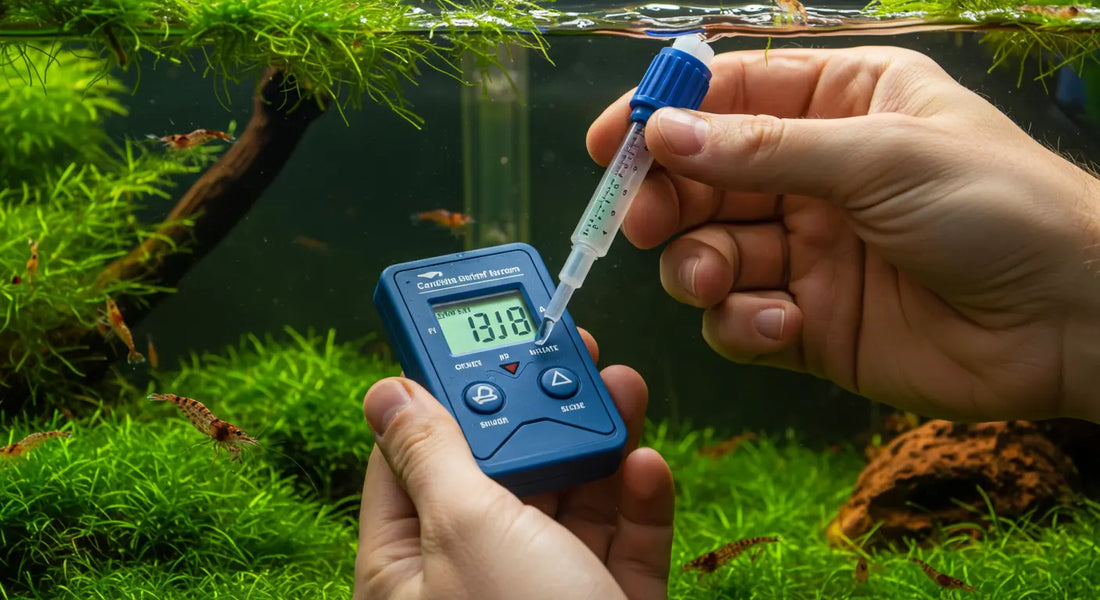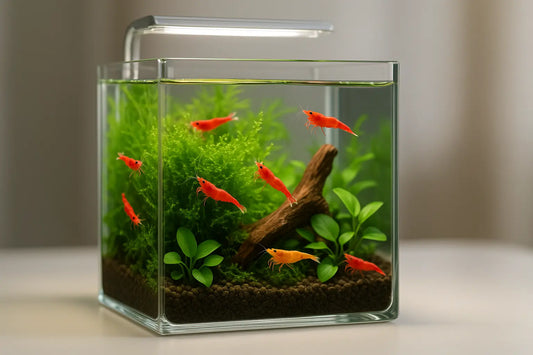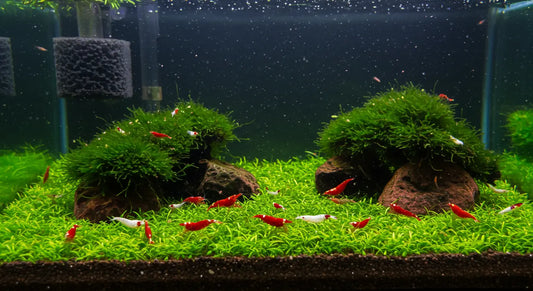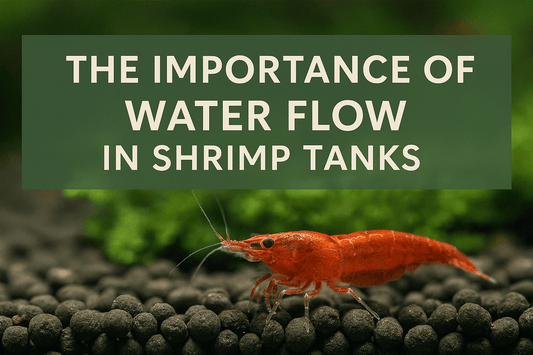
Caridina Shrimp Water Parameter Requirements
Imagine walking into a room filled with vibrant, lively colors where every Caridina shrimp thrives in a carefully maintained environment. In the world of freshwater aquariums, Caridina shrimp water parameter requirements are not just numbers on a test kit—they are the foundation of a healthy, thriving shrimp colony.
Whether you're a seasoned aquarist or just starting out, understanding the ideal water conditions for your Caridina shrimp is essential for successful breeding and long-term tank stability. Over the years, hobbyists have discovered that the secret to a flourishing shrimp tank lies in balancing the pH, GH, KH, TDS, and temperature. This guide delves into the science behind these parameters, peppered with real-life examples and practical tips. If you’re looking to refine your setup or troubleshoot common issues, you’re in the right place.
Understanding Caridina Shrimp
Caridina shrimp, such as the ever-popular Crystal Red Shrimp and Blue Tiger Shrimp, have captivated aquarists worldwide due to their striking colors and delicate nature. These shrimp originally hail from the soft, mineral-poor waters of Southeast Asia, which means their tank conditions need to mimic this natural environment as closely as possible.
Species Overview
- Crystal Red Shrimp: Known for their vibrant red and white patterns, these shrimp demand pristine water conditions to showcase their true colors.
- Blue Tiger Shrimp: With their distinctive blue hues, they are a favorite among hobbyists looking for a unique addition to their aquascape.
Real-World Example
Take the case of Jamie, an aquarist from Portland, who transformed her basic setup into a thriving Caridina haven by adjusting her water’s GH and KH levels. By switching to RO water and adding a trusted remineralizer, Jamie ensured that her Crystal Red Shrimp displayed more vivid coloration and improved overall health.
Essential Water Parameters
To create an optimal environment for your Caridina shrimp, several water parameters need to be carefully monitored and maintained. Each parameter plays a unique role in ensuring the health, molting, and breeding success of your shrimp.
pH Levels
- Ideal Range: 6.0-6.8
- Why It Matters: A slightly acidic pH helps mimic the natural soft waters of their native habitats. Fluctuations outside this range can lead to stress or even fatality.
General Hardness (GH)
- Recommended Range: 4-6 dGH
- Key Minerals: Calcium and magnesium
Carbonate Hardness (KH)
- Recommended Range: 0-1 dKH
- Role: Low KH levels ensure a stable, slightly acidic environment, crucial for Caridina shrimp’s molting process.
Total Dissolved Solids (TDS)
- Suggested Range: 80-150 ppm
- Role in the Tank: TDS levels give you an overall picture of your water’s purity and can impact shrimp health significantly.
Temperature
- Preferred Range: 64°F-74°F (18°C-23°C)
- Impact on Shrimp: Keeping the temperature stable prevents stress and supports the natural behavior of your shrimp.
By regularly monitoring these parameters using reliable water testing kits, you can ensure that your tank remains a safe haven for your shrimp.
Setting Up the Ideal Caridina Shrimp Tank
Creating a perfect home for your Caridina shrimp starts with a well-thought-out tank setup. A balanced environment not only highlights their vivid colors but also promotes stress-free molting and breeding.
Water Source Selection
- Use Purified Water: Many aquarists opt for Reverse Osmosis (RO) or distilled water to minimize unwanted minerals. However, remember that purified water lacks essential minerals; that’s where remineralizers come in.
- Remineralization: Adding a trusted remineralizer can restore the necessary GH and KH levels. For instance, using products like our Salty Shrimp Bee Shrimp Mineral GH ensures a stable mineral balance.
Substrate Choices
- Active/Balancing Substrates: Opt for substrates that help buffer pH and provide a natural environment. Many hobbyists have found that a dark, nutrient-rich substrate not only accentuates the shrimp’s colors but also maintains lower pH levels.
Filtration Systems & Aquascaping
- Gentle Filtration: Sponge or matten filters are ideal, ensuring efficient water circulation without creating strong currents that can stress the shrimp.
- Aquascaping Elements: Incorporate live plants such as Java moss and Anubias, along with natural décor like driftwood and Indian Almond Leaves. These elements mimic a natural habitat, subtly adjusting water parameters while offering hiding spots.
Maintaining Optimal Water Conditions
Even the best tank setups require ongoing care. Regular monitoring and adjustments are key to sustaining those optimal water conditions that Caridina shrimp need.
Regular Monitoring & Testing
- Consistent Testing: Use reliable water testing kits to keep an eye on pH, GH, KH, and TDS levels.
- Frequency: Ideally, test your water weekly, especially after any water changes. Monitoring helps you catch fluctuations early and adjust accordingly.
Routine Water Changes
- Best Practices: A weekly water change of about 10%-25% can do wonders in stabilizing water conditions. It’s not just about removing waste—fresh water helps maintain a consistent TDS level between 80-150 ppm, which is crucial for shrimp health.
- Pro Tip: When planning a water change, always ensure that the new water is properly remineralized if you’re using RO or distilled water.
Addressing Common Issues
- pH and Hardness Fluctuations: Sudden changes can stress your shrimp. Use buffers and remineralizers to gradually adjust the parameters.
- Contaminants: Avoid overfeeding and remove any decaying matter promptly to prevent spikes in TDS and other pollutants.
Acclimating Caridina Shrimp to New Environments
Acclimating your Caridina shrimp is a delicate process that can set the tone for their long-term health. A smooth transition from the store to your tank minimizes stress and helps them adapt to your water conditions.
The Drip Acclimation Method
- Prepare Your Tank: Ensure that your tank’s water parameters are stable and within the recommended ranges for pH, GH, KH, TDS, and temperature.
- Slowly Introduce Water: Using a drip line, gradually add tank water to the shrimp’s container over the course of 1-2 hours. This slow process helps the shrimp adjust without shock.
- Monitor Closely: Keep a close eye on their behavior. Any signs of distress might indicate a need for further adjustments.
Post-Acclimation Care
- Observation: After acclimation, monitor your shrimp for the first 24-48 hours. Look out for any unusual behavior or changes in coloration.
- Adjustments: If necessary, make minor adjustments to the tank’s parameters rather than drastic changes. Consistency is key.
Common Mistakes and How to Avoid Them
Even the most passionate aquarists can make errors along the way. Here are some of the most frequent pitfalls and actionable tips to steer clear of them:
Inconsistent Water Parameters
- Issue: Neglecting regular water testing can lead to fluctuations in pH, GH, KH, and TDS, stressing your shrimp and causing molting issues.
- Tip: Always test your water parameters at consistent intervals and adjust slowly with trusted buffers and remineralizers.
Overfeeding
- Issue: Excess food decomposes, raising TDS and causing ammonia spikes, which can harm your shrimp.
- Tip: Stick to a measured feeding schedule and remove any uneaten food promptly.
Introducing Incompatible Tank Mates
- Issue: Aggressive or predatory species can upset the delicate balance your Caridina shrimp require.
- Tip: Research and choose tank mates carefully, ensuring they share similar temperament and water parameter needs.
Conclusion
Maintaining precise Caridina shrimp water parameter requirements isn’t just about numbers—it’s about creating a sanctuary that allows your shrimp to thrive. By understanding their natural needs, setting up a balanced tank, and avoiding common mistakes, you set the stage for a vibrant and healthy colony.
Remember, every small step—from regular testing to cautious feeding—builds a resilient ecosystem that supports not just your shrimp’s beauty but their overall well-being. If you’re committed to the art of shrimp keeping, consider these best practices your roadmap to success.


